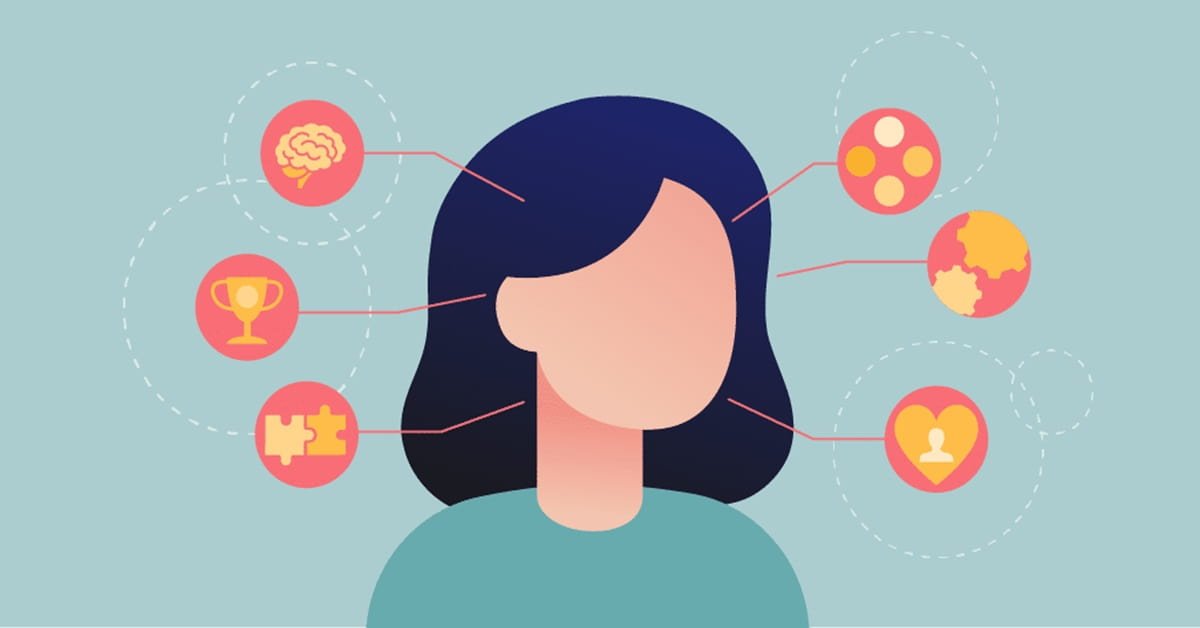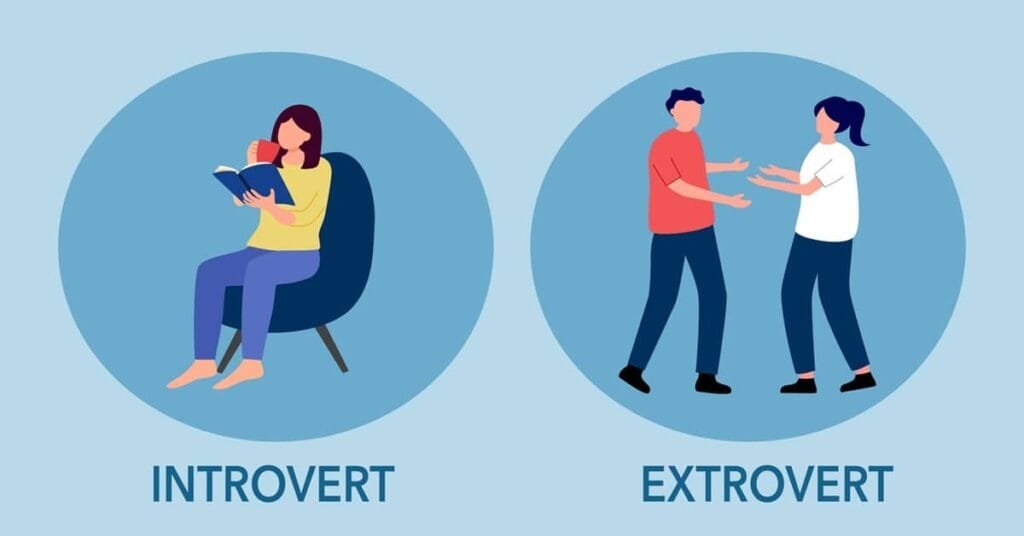Here’s an overview of characteristics, including what they entail, types of characteristics, how they manifest in individuals, and their significance across various contexts.
What Are Characteristics?
Characteristics are distinct traits or features that define an individual, group, or object. They can encompass many attributes, including physical appearances, personality traits, behaviors, skills, and other qualities that make someone or something unique.
Types of Characteristics
Characteristics can be broadly categorized into different types:
1. Physical Characteristics
- Attributes related to physical appearance, such as height, weight, eye color, hair color, and general body structure.
- Example: A person may have curly hair and brown eyes.
Physical characteristics are observable traits and features that define the appearance of individuals or objects. These characteristics can range from innate qualities to those influenced by environment, lifestyle choices, and developmental factors. Here’s a comprehensive overview of physical characteristics:
Types of Physical Characteristics
- Genetic Traits:
- Height: The vertical measurement of a person, often influenced by genetics.
- Skin Color: Ranges from very light to very dark, determined largely by genetics and ancestry.
- Hair Color and Texture: Includes variations like straight, wavy, or curly hair and colors ranging from blonde to black.
- Eye Color: Common colors include brown, blue, green, and gray, determined by genetic inheritance.
- Body Shape and Structure:
- Body Type: Categorized generally into ectomorph (slender), mesomorph (muscular), and endomorph (rounder).
- Bone Structure: The width and density of bones can influence overall appearance, such as broad shoulders or narrow hips.
- Facial Features:
- Facial Shape: Can range from round to oval, square, or heart-shaped.
- Eye Shape and Size: Includes features such as almond-shaped or round eyes.
- Nose Shape: Varieties include straight, curved, or flat.
- Mouth Shape: Can be described as wide, thin, full, or downturned.
- Physical Condition:
- Fitness Level: Refers to body composition, muscle tone, and overall health, often influenced by diet and exercise.
- Posture: The alignment of the body while standing, sitting, or moving, which can indicate confidence or health issues.
- Presence of Health Conditions: Includes visible signs of medical conditions, such as skin conditions (acne, eczema) or physical disabilities.
- Age-Related Characteristics:
- Youthful Appearance: Features like smooth skin and bright eyes typical of younger individuals.
- Signs of Aging: May include wrinkles, gray hair, and changes in body composition as one ages.
Importance of Physical Characteristics
- Identity and Expression: Physical characteristics can play a significant role in how individuals perceive themselves and are perceived by others. They contribute to personal identity and can express cultural, ethnic, or social identity.
- Social Interactions: First impressions are often based on physical appearance. Characteristics can influence how people are treated, their social opportunities, and their interactions with others.
- Health Indicators: Certain physical traits can indicate health status. For example, a person’s weight may relate to their health conditions and lifestyle choices.
- Cultural Standards of Beauty: Different cultures have diverse ideals of beauty that can influence the perception of physical characteristics. These standards can affect self-esteem and body image.
2. Major Personality Trait Models
1. The Big Five Personality Traits (OCEAN)
The Big Five model is one of the most widely accepted frameworks in psychology, encompassing five broad dimensions:
- Openness to Experience:
- Traits include curiosity, creativity, and willingness to try new things. High scorers are imaginative and adventurous, while low scorers may prefer routine and traditional approaches.
- Conscientiousness:
- Traits include organization, dependability, and discipline. High scorers are often goal-oriented and reliable; low scorers may struggle with procrastination and lack of follow-through.
- Extraversion:
- Traits include sociability, energy, and assertiveness. High scorers tend to be outgoing and enjoy social interactions, while low scorers (introverts) may find large groups draining and prefer solitude.
- Agreeableness:
- Traits include compassion, cooperativeness, and friendliness. High scorers are typically trusting and empathetic, while low scorers may be more competitive and skeptical.
- Neuroticism:
- Traits include emotional instability, anxiety, and moodiness. High scorers may experience frequent emotional fluctuations or stress; low scorers tend to be more emotionally stable and resilient.
2. Myers-Briggs Type Indicator (MBTI)
The MBTI is another well-known personality framework, categorizing individuals into one of 16 personality types based on four dichotomies:
- Extraversion (E) vs. Introversion (I): Focus on the outer world vs. the inner world.
- Sensing (S) vs. Intuition (N): Preference for concrete information vs. abstract concepts.
- Thinking (T) vs. Feeling (F): Decision-making based on logic vs. emotions and values.
- Judging (J) vs. Perceiving (P): Preference for structure and plans vs. flexibility and spontaneity.
Examples of personality types include INTJ, ESFP, ENFJ, etc.
Additional Personality Characteristics
3. Emotional Intelligence (EQ)
- Self-awareness: Understanding one’s emotions and how they affect thoughts and behavior.
- Self-regulation: The ability to manage strong emotions and impulses.
- Motivation: A drive to achieve for accomplishment rather than external rewards.
- Empathy: Recognizing and understanding the emotions of others.
- Social Skills: Building and maintaining relationships, effective communication, and conflict resolution abilities.
4. Type A and Type B Personalities
- Type A: Highly competitive, ambitious, organized, and time-conscious. Type A individuals often feel a sense of urgency and can be aggressive or impatient.
- Type B: More relaxed, easygoing, and less stressed than Type A individuals. Type B personalities are generally more patient and enjoy life at a slower pace.
5. The Enneagram
The Enneagram is a personality typology that categorizes individuals into nine distinct personality types, each with unique motivations, fears, and behaviors. The types include:
- The Reformer: Principled, purposeful, and self-controlled.
- The Helper: Generous, empathetic, and nurturing.
- The Achiever: Success-oriented, adaptable, and driven.
- The Individualist: Sensitive, introspective, and expressive.
- The Investigator: Analytical, perceptive, and curious.
- The Loyalist: Committed, responsible, and security-oriented.
- The Enthusiast: Spontaneous, versatile, and fun-loving.
- The Challenger: Powerful, assertive, and self-confident.
- The Peacemaker: Easygoing, reassuring, and complacent.
3. Behavioral Characteristics
- Observable actions or patterns of behavior in specific situations.
- Example: An individual may be consistently punctual, demonstrating reliability.
Behavioral characteristics refer to the patterns of behavior and actions that individuals display in response to their environment, social situations, and internal states. These characteristics can significantly shape how people interact with others, handle challenges, and approach daily life. Here’s a detailed overview of behavioral characteristics:
Types of Behavioral Characteristics
- Consistency and Reliability:
- Punctuality: The habit of being on time; punctual individuals are often seen as reliable and responsible.
- Dependability: Being counted on to follow through on commitments, tasks, and responsibilities.
- Social Behavior:
- Cooperativeness: The willingness to work with others and contribute to group efforts, indicating teamwork and collaboration skills.
- Assertiveness: The ability to express thoughts and feelings confidently while respecting others; assertive individuals can advocate for themselves without being aggressive.
- Introversion/Extraversion: How individuals interact socially; introverts may prefer solitary or small-group interactions, while extraverts thrive in larger social gatherings.
- Adaptability and Flexibility:
- Openness to Change: The willingness to embrace new ideas, experiences, and changes in routine or plans.
- Problem-Solving Skills: The ability to approach challenges creatively and find effective solutions in various situations.
- Emotional Regulation:
- Anger Management: How individuals control their anger and respond to frustrating situations; effective anger management can lead to healthier relationships.
- Stress Response: The typical reactions to stress, which can range from constructive coping strategies to maladaptive behaviors, such as avoidance or aggression.
- Motivation and Goal Orientation:
- Achievement Orientation: The drive to accomplish goals and pursue success, often reflected in behaviors such as diligence and perseverance.
- Intrinsic vs. Extrinsic Motivation: Intrinsically motivated individuals engage in activities for personal satisfaction, while extrinsically motivated individuals may pursue goals for external rewards or recognition.
- Interpersonal Skills:
- Communication Style: How individuals convey information; effective communicators use clear language, active listening, and nonverbal cues.
- Empathy: The ability to understand and feel the emotions of others, leading to compassionate and supportive interactions.
- Conflict Resolution:
- Negotiation Skills: The ability to reach agreements and resolve disagreements constructively without escalating conflicts.
- Compromise: Willingness to accept a middle ground in disputes, showing flexibility in opinions and behaviors.
Importance of Behavioral Characteristics
- Impact on Relationships: Behavioral characteristics significantly influence personal and professional relationships. Positive traits such as empathy, reliability, and effective communication strengthen connections, while negative behaviors may lead to misunderstandings and conflicts.
- Workplace Performance: In professional settings, behaviors such as teamwork, adaptability, and motivation contribute to individual and team success. Behavioral characteristics often determine how well individuals respond to challenges and collaborate with others.
- Personal Development: Understanding one’s behavioral characteristics can lead to greater self-awareness and personal growth. Individuals can work to enhance positive behaviors and modify those that may hinder their progress.
- Cultural Influences: Behavioral characteristics can be shaped by cultural norms and expectations. Different cultures may value traits like assertiveness or humility differently, affecting how individuals express themselves.
4. Cognitive Characteristics
- Attributes related to thinking processes, including intelligence, creativity, problem-solving skills, and learning styles.
- Example: A person might excel in critical thinking and analytical reasoning.
Cognitive characteristics refer to the mental processes involved in understanding, reasoning, problem-solving, and decision-making. These characteristics can significantly impact how individuals learn, engage with information, and navigate challenges. Here’s an overview of cognitive characteristics:
Types of Cognitive Characteristics
- Intelligence:
- General Intelligence (g): Refers to overall cognitive ability, often measured by IQ tests. It encompasses various cognitive skills, including reasoning, problem-solving, and critical thinking.
- Multiple Intelligences: Howard Gardner’s theory suggests that intelligence is multifaceted, including linguistic, logical-mathematical, spatial, musical, bodily-kinesthetic, interpersonal, intrapersonal, and naturalistic intelligences.
- Learning Styles:
- Visual Learners: Prefer to use images, diagrams, and spatial understanding to process information.
- Auditory Learners: Learn best through listening and verbal instruction, often thriving in discussions and lectures.
- Kinesthetic Learners: Prefer hands-on experiences and physical engagement to understand concepts.
- Memory:
- Short-term Memory: The capacity to hold a small amount of information for a brief period, often used in everyday tasks like remembering a phone number.
- Long-term Memory: The ability to store and retrieve information over extended periods. This can include declarative memory (facts and events) and procedural memory (skills and routines).
- Problem-Solving Skills:
- Analytical Thinking: The ability to break down complex information into smaller, manageable parts for better understanding and analysis.
- Creative Thinking: The capacity to generate original ideas and solutions, thinking outside the box to approach problems from new angles.
- Critical Thinking:
- Evaluation of Information: The ability to assess sources, arguments, and evidence for reliability and validity.
- Reasoned Judgment: Making decisions based on logical reasoning rather than emotional responses, often involving weighing pros and cons.
- Cognitive Flexibility:
- Adaptability in Thinking: The ability to switch between thinking about different concepts or to think about multiple concepts simultaneously, facilitating improved problem-solving and decision-making.
- Open-mindedness: Being open to new ideas and different perspectives, which can enhance collaborative problem-solving.
- Attention and Focus:
- Sustained Attention: The ability to concentrate on a task for an extended period without becoming distracted.
- Selective Attention: The capacity to focus on specific stimuli while ignoring irrelevant information, crucial for effective learning and task execution.
Importance of Cognitive Characteristics
- Learning and Education: Cognitive characteristics largely influence how individuals learn and process information. Understanding one’s learning style can help tailor educational experiences for better outcomes.
- Workplace Success: Effective cognitive skills are essential in many professional environments. Employers value analytical thinking, creativity, and problem-solving abilities, which can significantly enhance individual and team performance.
- Personal Development: Individuals can work on enhancing cognitive skills such as critical thinking and memory to improve daily functioning and decision-making capabilities.
- Mental Health: Cognitive characteristics can also influence emotional well-being. For instance, negative cognitive patterns may contribute to issues such as anxiety or depression, while positive thinking can promote mental health.
5. Emotional Characteristics
- Traits associated with how individuals experience and express emotions.
- Example: An emotionally resilient person can cope well with stress and adversity.
Emotional characteristics refer to the qualities and attributes that influence how individuals experience, express, and manage their emotions. These characteristics play a vital role in shaping interpersonal relationships, decision-making, and overall well-being. Here’s a detailed overview of emotional characteristics:
Key Emotional Characteristics
- Emotional Intelligence (EQ):
- Self-Awareness: The ability to recognize and understand one’s own emotions and their impact on thoughts and behaviors.
- Self-Regulation: The capacity to manage and control one’s emotions, particularly in stressful situations, leading to thoughtful responses rather than impulsive reactions.
- Motivation: The drive to pursue goals for personal satisfaction or intrinsic rewards, rather than for external validation.
- Empathy: The ability to understand and share the feelings of others, facilitating compassion and supportive interactions.
- Social Skills: Proficiency in managing relationships, communicating effectively, and resolving conflicts constructively.
- Emotional Stability:
- Resilience: The ability to bounce back from adversity, stress, or setbacks. Resilient individuals tend to cope with challenges more effectively and maintain a positive outlook.
- Stress Tolerance: The capacity to handle stressors without becoming overwhelmed, allowing individuals to maintain performance in challenging situations.
- Emotional Expression:
- Expressiveness: The ability to convey emotions through verbal communication, body language, and facial expressions. Expressive individuals may be more open about their feelings.
- Emotional Control: The ability to regulate the expression of emotions appropriately in different contexts, balancing honesty with social expectations.
- Emotional Responsiveness:
- Sensitivity to Others: The degree to which individuals notice and respond to the emotions and needs of others, which can foster strong social bonds.
- Reactivity: The level of emotional response to stimuli; some individuals may respond strongly to provocation, while others remain calm.
- Mood Stability:
- Consistency in Emotions: Individuals who experience mood swings may struggle with emotional stability, while those with steady moods may find it easier to maintain balanced relationships and cope with daily stressors.
- Optimism vs. Pessimism:
- Optimism: A tendency to have a hopeful outlook on life situations, believing in positive outcomes and maintaining a positive attitude, even in adversity.
- Pessimism: A tendency to expect negative outcomes or focus on the downsides of situations, which can lead to feelings of helplessness or anxiety.
Importance of Emotional Characteristics
- Impact on Relationships: Emotional characteristics greatly influence how individuals relate to others. Higher emotional intelligence can lead to better communication, conflict resolution, and stronger relationships.
- Mental Health: Emotional characteristics can affect overall mental well-being. For example, those with high resilience and emotional control tend to experience lower levels of anxiety and depression.
- Decision-Making: Emotions play a critical role in the decision-making process. Emotional awareness can help individuals make more informed choices rather than impulsive decisions based on immediate feelings.
- Professional Success: Emotional characteristics such as empathy, self-regulation, and social skills are increasingly recognized as crucial for workplace success, influencing teamwork, leadership, and workplace dynamics.
How Characteristics Manifest
Characteristics can manifest differently depending on the context. For example:
- In Social Situations: Personality traits may influence how someone interacts with others, such as an extrovert engaging in lively conversations versus an introvert preferring quieter exchanges.
- In Work Environments: Behavioral characteristics can determine work style, with some individuals thriving in collaborative roles, while others excel in independent tasks.
- In Learning: Cognitive characteristics shape how individuals approach challenges and understand information, affecting learning styles and academic performance.
Importance of Characteristics
Understanding characteristics is significant in various contexts:
- Personal Development: Individuals can enhance self-awareness by recognizing their traits, leading to personal growth and improved interpersonal relationships.
- Workplace Dynamics: Recognizing the diverse characteristics of team members helps in forming balanced teams that leverage each person’s strengths.
- Psychology and Counseling: In therapeutic settings, understanding a client’s characteristics can aid in developing tailored interventions for mental well-being.
- Education: Teachers can adapt their approaches based on the cognitive and emotional characteristics of their students, enhancing the learning experience.
Conclusion
Characteristics define who we are and play a crucial role in shaping our behaviors, interactions, and overall experiences in life. By understanding our own and others’ characteristics, we can foster better relationships, improve teamwork, and enhance personal development.


